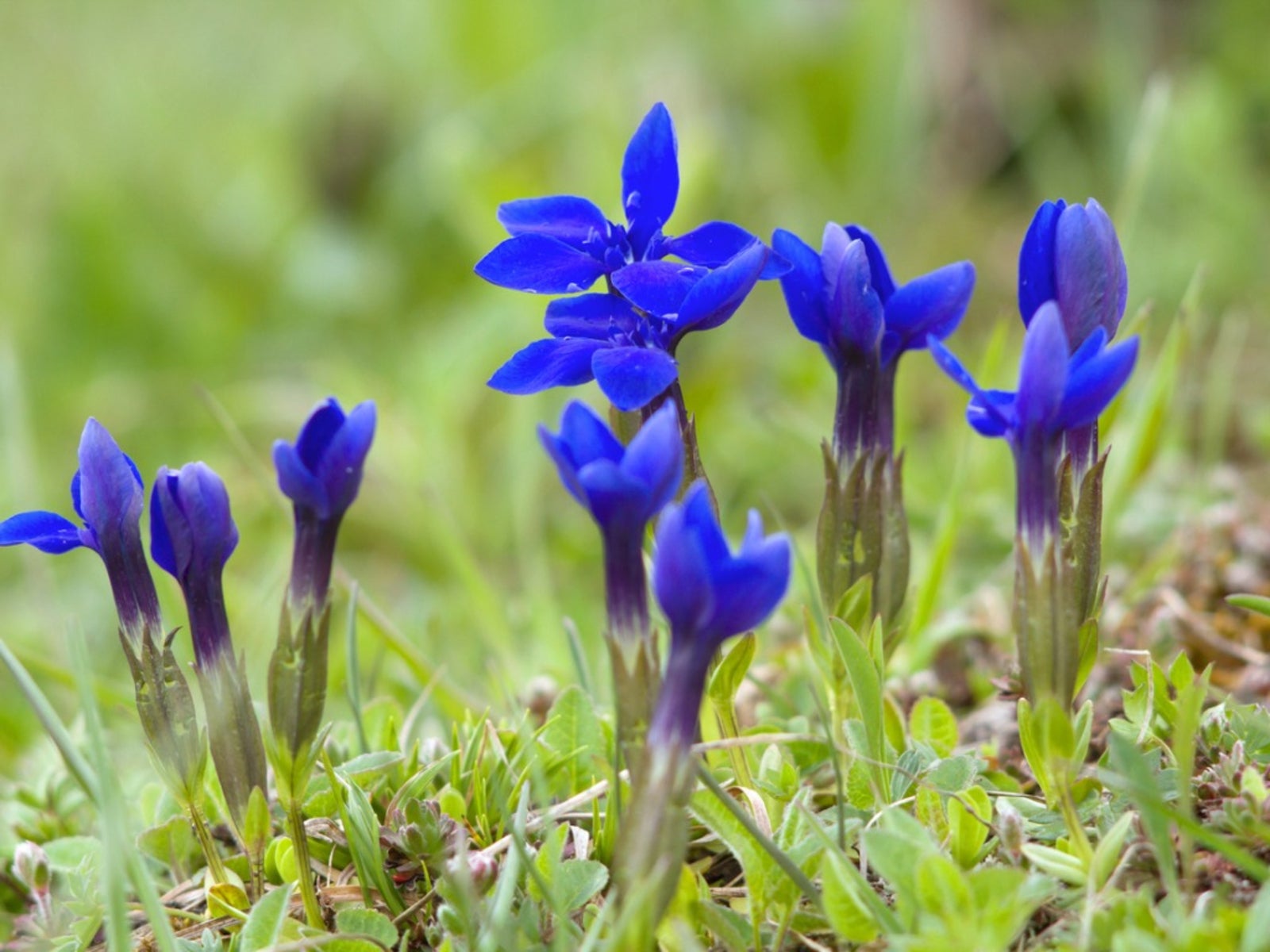Gentian Wildflowers: Tips For Growing Gentian Plants In The Garden


Gentian wildflowers are sometimes hard to find in their native habitat, but once you've caught a glimpse and seen these plants budding or in bloom, you'll likely be impressed by their showy beauty. If you've not heard of gentian flowers, you may be wondering exactly what is gentian?
What is Gentian?
Gentian wildflowers grow all over the world, except on the continent of Antarctica, and have unusual pollination habits. More than 1,000 species have been identified, some in boggy forest areas and others in the desert. Plants in the Gentian species range from a small herb to a tree that grows in the rainforest. Growing gentian is pollinated by moths, bees, birds, bats and flies. An unusual aspect of gentian flowers is that the buds on some types do not open until the right pollinator forces them to expose their inner pistils and stamens. Many gentian wildflowers have trumpet-shaped blooms. Growing gentian can be found in a range of colors, depending on their location and species. Blue is the predominant color in the Northern Hemisphere, but blooms of red and white are common in other areas. Gentians have been used for centuries for their medicinal properties and as cures for a range of ailments. A Croatian king of old, named Gentius, is thought to have first discovered the herbal properties of growing gentian flowers, hence the name. Some gentians are currently used as flavoring for liqueurs and beer; others are used as snakebite remedies and digestive aids.
How to Plant Gentian
Those attempting to grow gentians have learned that some of the varieties are difficult to propagate outside of their native habitat, while others adapt well to cultivation. Determine the conditions necessary for the type of gentian wildflower you wish to grow. Choose an area that is as close to its native growing conditions as possible and plant at the appropriate time. A woodland garden, bog, or rock garden may be the right area to experiment with how to plant gentian. Lisianthus and Persian violet are members of the Gentian family, as are the marsh marigold, Texas bluebell, and plants of the Centaury species. Regular gentian care is necessary for the wildflower to grow and flourish. You'll find the extra effort is worthwhile when your gentian wildflowers bloom in your landscape.
Sign up for the Gardening Know How newsletter today and receive a free copy of our e-book "How to Grow Delicious Tomatoes".

Becca Badgett was a regular contributor to Gardening Know How for ten years. Co-author of the book How to Grow an EMERGENCY Garden, Becca specializes in succulent and cactus gardening.